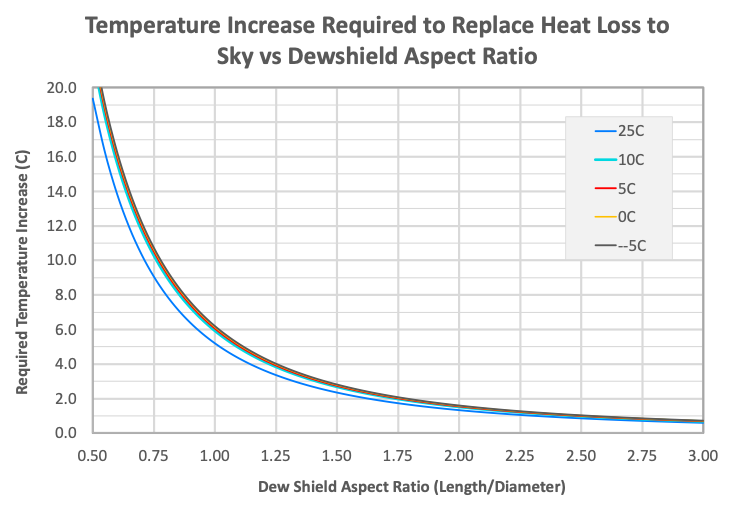Where are you putting the heater strap? I've never seen "streaking" on any of my C14s. That makes me think that you are applying WAY too much heat. Do you have a dew shield or any other dew prevention strategies?
The single most effective way to protect a SCT from dew is to use a dew shield and to heat the shield itself. For that reason, I really like metal dew shields because metal is better at conducting the heat to the inside of the shield where you need it. It is easy to show that a dew shield that is just 1.5 times as long as the aperture of the telescope will block 90% of the heat exchange with the sky compared to using no shield. If the conditions are pretty wet, that still might not enough to prevent dew; however by raising the temperature of the shield by just 2.2C, you'll replace the heat lost to the sky and eliminate the possibility of dew on the front of the plate. It's best to put the heating strap about 1/3 of the way from the top of the shield. I've attached some data plots so that you can see how things vary with dew shield aspect ratio. Obviously longer dew shields are more effective but they are also MUCH more susceptible to wind.
Even with a dew shield, you can still get condensation inside of the tube simply because of radiative heat loss between the tube and the sky. You can address that problem passively by wrapping the tube in Reflectix, which you can buy at your local hardware store. Again if your conditions are really wet, you can add another heater strap about 3-5" behind the corrector, under the Refectix to insure that the temperature inside the tube does not drop below ambient. Again, that does not require much heat.
The Celestron smart controller is a rare product that does the right thing to prevent dew. It measures the actual temperature-dew point spread and only applies heat when the spread is below a preset threshold. The dew buster controller doesn't do that, but it includes the ability to actually measure how much you are heating the components so it's easy to set it to only allow a 2C temperature rise on the dew shield (for example). Years ago I built my own controller to measure the temperature-dew point spread and switch on a Dew Buster when it was needed. I ran that system in New Mexico under pretty wet dew conditions and never once had dew condense on the corrector or inside the tube. Whenever you apply heat, you will generate thermals but in my system it looked like nothing worse than a small degradation in seeing. You just have to be careful to use the smallest amount of heat needed and no more.
John
Here's a plot showing the amount of heat exchange as a function of dew shield aspect ratio

Here are the results of a calculation to determine how much you have to raise the temperature of a dew shield to perfectly balance heat loss to the sky.


